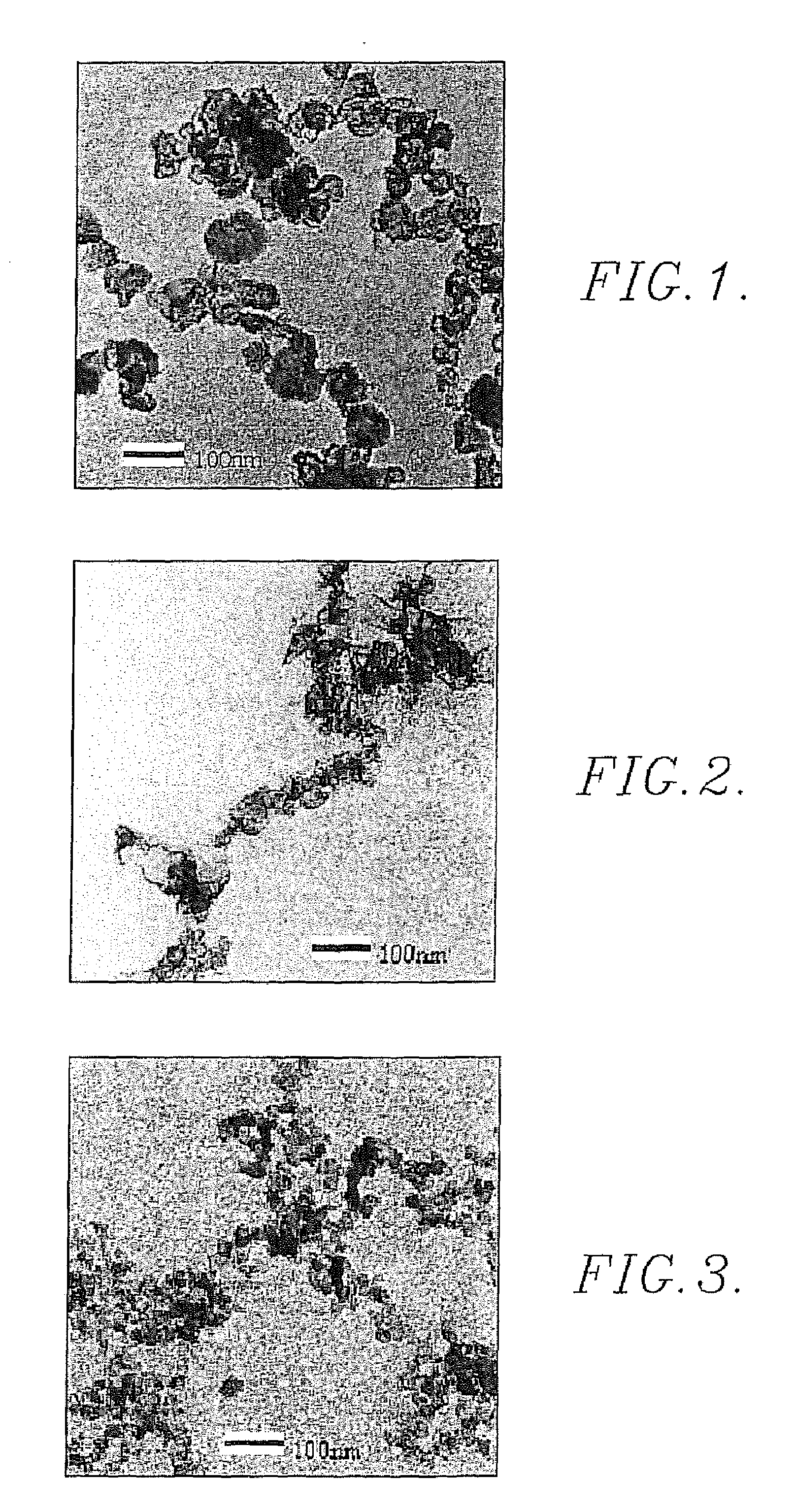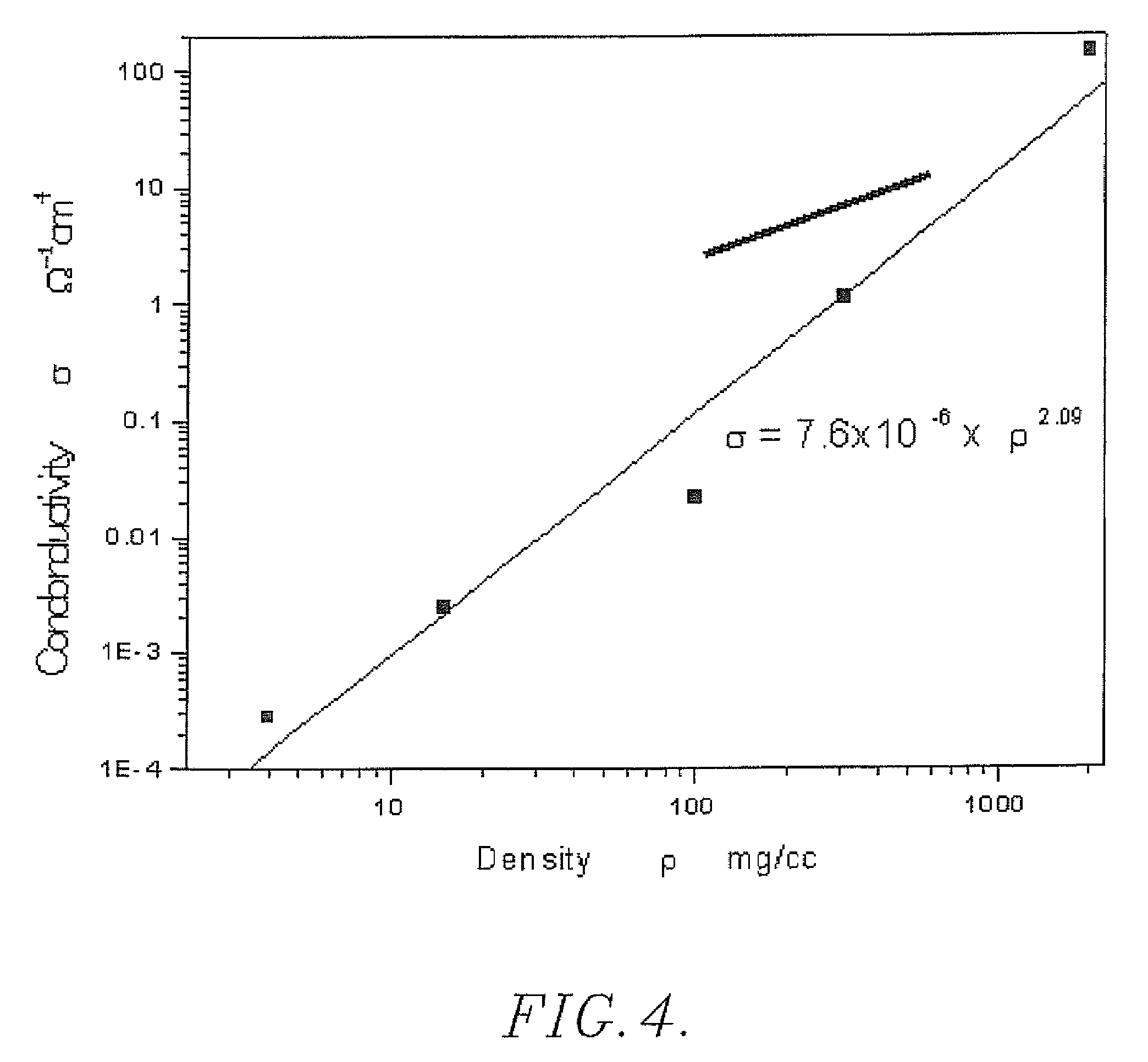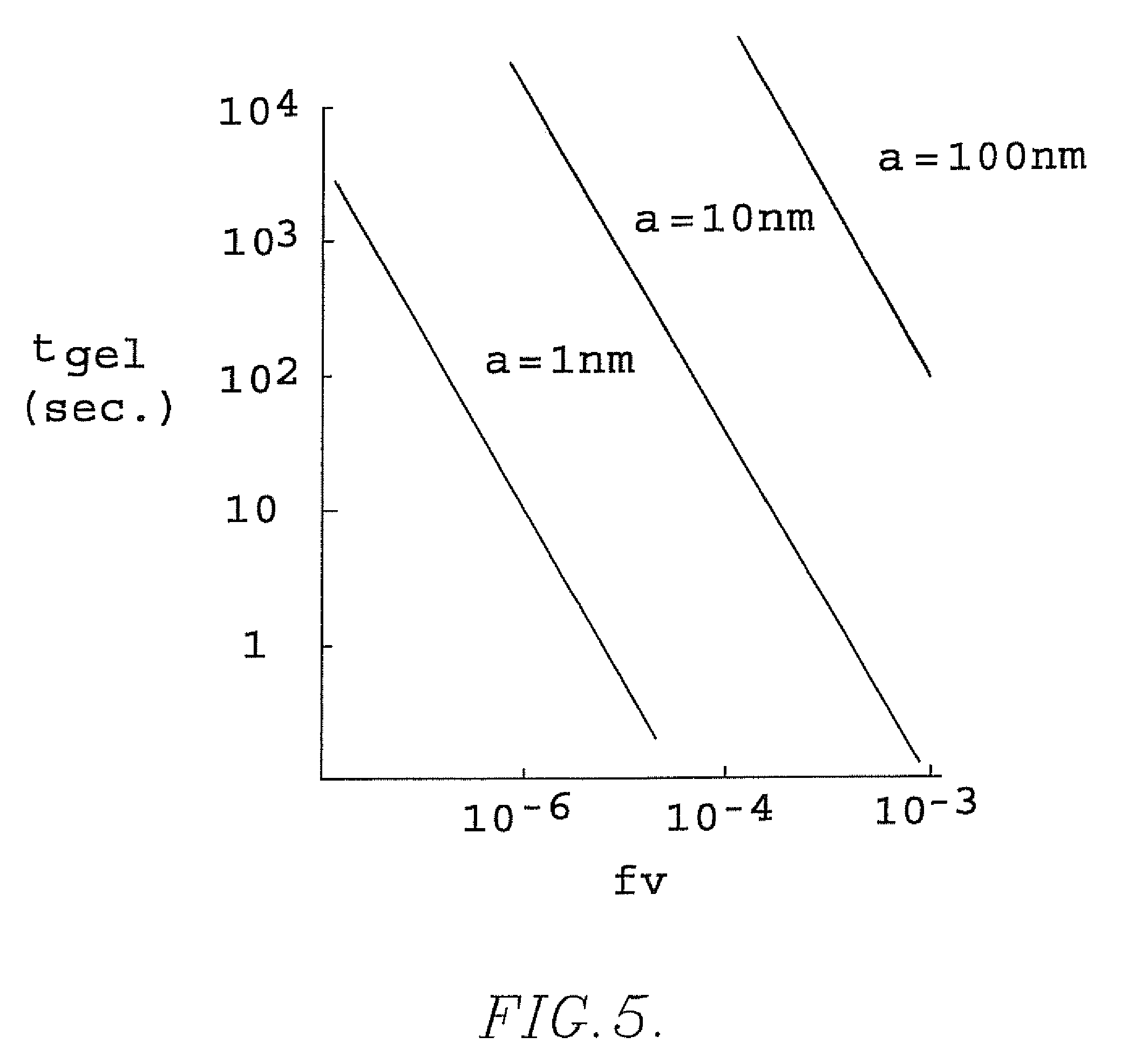Aerosol gels
a gel and aerosol technology, applied in the field of aerosol gels, can solve the problems of low overall thermal conductivity of all, low solid thermal conductivity, and low gaseous conductivity,
- Summary
- Abstract
- Description
- Claims
- Application Information
AI Technical Summary
Benefits of technology
Problems solved by technology
Method used
Image
Examples
example 1
[0044]A series of carbon gels were produced using a 17-liter closed combustion chamber. In each instance, an explosive mixture of liquid or gaseous hydrocarbon and oxygen (e.g., 2 parts acetylene by volume / 1 part oxygen by volume) were introduced into the chamber at up to 1 atmosphere pressure at room temperature. The gaseous hydrocarbons were injected as a gas, whereas the liquid hydrocarbons were injected as a liquid aerosol (oxygen) mist having an average particle size estimated to be on the order of 1 micron.
[0045]A conventional spark plug having its electrode within the chamber was used to ignite the mixture; the spark was generated using a Tesla coil coupled to the spark plug. Generation of the spark caused an instantaneous explosion which rapidly produced nanometer-sized (up to about 50 nm) carbon particles, which quickly aggregated to form ramified fractal carbon structures. After the explosion, the material within the chamber was allowed to sit quiescently for a period of a...
example 2
[0060]Silica (SiO2) aerosol gels were prepared by spontaneous explosive reaction of silane (SiH4) with either oxygen (O2) or nitrous oxide (N2O). These reactions were performed in the presence of an inert background gas such as nitrogen (N2) or carbon dioxide (CO2), but otherwise the procedure used was the same as that set forth in Example 1 for the preparation of carbon aerosol gels. It is believed that the silica nanoparticles are in a molten state when they are formed, and therefore without inert background gas these nanoparticles will move balistically and “splash” on the chamber walls. Thus, the role of the inert background gas is to help in quickly quenching the fresh silica nanoparticles below the melting temperature thereof and before they collide with the chamber walls or each other. Typically, 0.46 moles of background gas was used in the 3.9 liter explosion chamber, About 0.016 moles of silane and 1.4 times the stoichiometric amount of oxygen was used in each reaction. Ass...
PUM
| Property | Measurement | Unit |
|---|---|---|
| average radius | aaaaa | aaaaa |
| radius | aaaaa | aaaaa |
| density | aaaaa | aaaaa |
Abstract
Description
Claims
Application Information
 Login to View More
Login to View More - R&D
- Intellectual Property
- Life Sciences
- Materials
- Tech Scout
- Unparalleled Data Quality
- Higher Quality Content
- 60% Fewer Hallucinations
Browse by: Latest US Patents, China's latest patents, Technical Efficacy Thesaurus, Application Domain, Technology Topic, Popular Technical Reports.
© 2025 PatSnap. All rights reserved.Legal|Privacy policy|Modern Slavery Act Transparency Statement|Sitemap|About US| Contact US: help@patsnap.com



